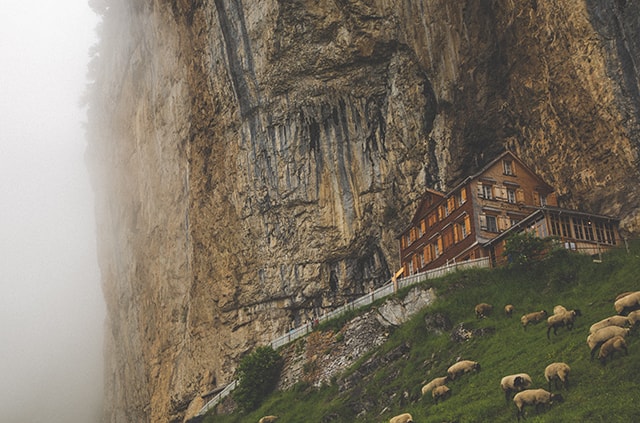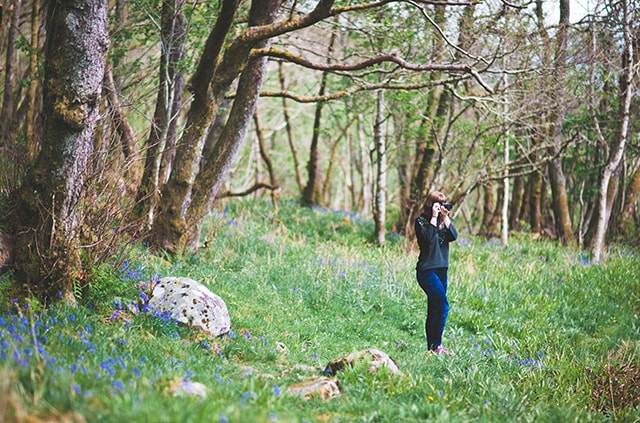All vacation rentals are different, we can agree on that. But besides the special magic that each of them gives off, there is something else that defines them: the type of vacation that drives guests to book them. Promoting a property and making a success of it relies on more than advertising it at random. You have to know who to market to, as well as how and when to do it, in order to make your campaign more effective.
Have you ever thought about addressing a more specific audience? In most cases, the type of guests you attract can be just as valuable as the number of reservations you receive, as they may return in the future to stay at your property again. Or, perhaps they are looking for exactly what you can offer them.
For example, if your vacation rental belongs to the beach or mountain tourism sector, it’s useful to find the target audience who are looking for your type of property and help them to find you. But, how can you do this successfully? Read on for our simple, actionable tips.
1. Define your property

A cabin is not the same as a castle, and a farm does not evoke the same image in guests’ minds as a chalet does. Don’t be afraid to be specific – it will be more beneficial when defining your property and presenting it to your potential guests.
Is your rental small, compact and of rustic construction? It’s a cabin. Is it an imposing stone house that belongs in a fairytale? Call it a castle. Do you have several properties with the same (or similar) distribution? These are apartments or units.
Remember that the meaning of these words may vary according to the guest’s origin. For example, in places like the UK, the term “bungalow” refers to a low house with just one story. In contrast, in South East Asia (where the term originated) it can actually mean the opposite – a large, detached house with more than one story.
2. Consider all the characteristics of your area

From the title of this article, it will come as no surprise that you should be thinking about your property’s location. But more than simply where it is, you should be thinking about the types of activities that guests enjoy in your area – so you can advertise them along with your property.
Is your property on the beach? In the historic center of a quaint, coastal town? Near the mountains? In the middle of a forest? As well as asking yourself these questions, you also have to think about how your guests will spend their time. Whether that’s playing golf on the course near your apartment; hiking or biking in the mountains outside your front door; surfing, paddle boarding or doing any other adventure sports in a family group. You will have to thoroughly investigate your area to know what’s on offer.
3. Choose a theme

Now that you know what your area can offer and, consequently, the reasons why your potential guests are looking for a vacation rental there, it’s time to choose a theme for your rural or beach vacation rental.
As the industry has grown so much recently, so have these themes which now include everything from luxury vacations, pet-friendly escapes and accessible travel, to family vacations, couples’ retreats and LGTBQI getaways. In addition to this, you can also market your property based on specific events that are happening nearby, such as music or film festivals, concerts or sports fixtures and so on.
There are many vacation rental themes to choose from and it’s a fun task to decide which topics define you and your property best. Especially as it will help you with your marketing strategy later on!
4. Draw up a marketing plan for your specific audience
Because it’s not the same task addressing those travelers who want to spend the day at the beach as those who like adventure sports in the mountains, you have to advertise your property in a way that lets your specific target market know that you have everything they need. This goes from how you portray the type of lifestyle guests can expect to have, to the way in which you write your property descriptions.

Create a guest persona
When people decide to go on vacation, they usually have a clear idea of what they’re looking for, and they’ll choose a place to stay that fulfills that idea. While you will meet many types of guests as a vacation rental host, they can usually be whittled down to three main categories.
Guests who are looking for a bargain: Don’t let this put you off. You can reach these guests and maintain a quality property without losing money. How? By offering discounts to some groups (particularly, those who may be interested in going on vacation in your area). This can help increase word of mouth and as a result, bookings.
Guests who want to understand and explore your area: You will have to dedicate more time to these guests, as they will want plenty of recommendations regarding activities, events, places to eat, etc. They will look for a good and direct relationship with their host, and they are probably also the most likely to leave you a strong, detailed review about their stay (which other guests will be able to see!).
Guests who prioritize practicality: With rural and beach tourism, distances from your vacation rental to local attractions can be a deal-breaker. So if you’re just 10 minutes from the beach, let them know. Equally, if your rental is near a lively commercial zone filled with restaurants and bars, be sure to note that in your description. If your property is located in a remote part of the mountains, it’s up to you as the host to make sure your guests have everything they need to enjoy their stay.
Once you know which of these three categories your ideal guest falls into, you can move onto the second phase.
Thinking about your guests’ needs, tastes and desires
If your vacation rental is on the beach, you may want to decorate your property with nautical colors and style to give it that touch of coastal magic. Another idea is to transform the entrance space into a solarium and include a barbecue area. It will also be beneficial for you (and your cleaners!) to prepare an area where guests can desand before entering your property. A good way to determine what else your property needs is by imagining you are the guest and doing a walk-around of your home.
On the other hand, if you have a rural vacation rental, you’ll likely receive guests who are interested in dreamy natural surroundings and the local gastronomy. They will want to enjoy nature, so you can think about investing in (for example) a telescope to see the stars in a less polluted sky, or a perfect Wendy house for children to play in. They will also want to know about places to try the best, most typical food cooked by locals who have been in the trade for years.
5. Recommendations of what to add to your vacation rental
During their vacation, guests will have a lot of free time and many hours to fill, so amenities such as a TV and board or card games are always useful. There are also more specific items that we can recommend, depending on the type of property you have.
For beach vacation rentals

- Taking into account that your peak season will be summer and warm weather seasons, your guests will want to have air conditioning or, at the very least, fans.
- A designated area for sand removal before guests enter the house is a helpful addition to avoid beach day leftovers all over your furniture.
- You’ll earn extra brownie points if you also offer beach/pool towels and single-use flip-flops, (in case a guest forgets their own!).
- A much-appreciated detail is providing reading material for those relaxing moments under the sun, so keep an updated stash of magazines and a variety of novels at hand.
- Offer some sturdy, reusable plastic bags for your guests’ use: a handy way to transport wet swimsuits from the beach back home.
- Leave a few big bottles of water in the fridge for when guests get home from the beach thirsty!
For rural vacation rentals

- As rural tourism is usually more popular in the shoulder season or cooler months, it’s a good idea to provide your guests with umbrellas and possibly a few raincoats, so that bad weather doesn’t spoil their stay.
- Extra lanterns and matches never go amiss.
- A surplus stock of blankets for extra warmth and coziness is always welcome, but make sure they are clean and free of musty smells.
- Try to anticipate the common things that guests always forget and make them available at your home. This is especially useful if you’re not located near a big town and it will be difficult for guests to find – such as adapters, chargers, coffee capsules and a variety of teas.
- Being in a mountainous or rural location, it’s essential to give your guests options and advice regarding the different leisure pursuits nearby. Collect some activity brochures and leave them in a visible place in your vacation rental.
Your vacation rental is unique in many ways and this will help you attract guests. No matter whether you’re in a lively beach or tranquil rural location, there are plenty of things you can do to make sure your home is apt for incoming guests!


